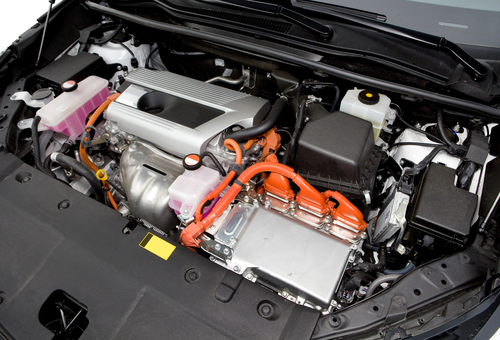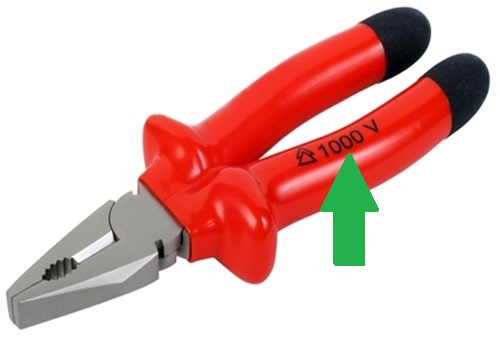
While the direst predictions of a global economic collapse caused by the present pandemic have not been realized, there is no doubt that consumer spending across the globe has been severely curtailed. In many automotive markets, including the Australian market, regular car servicing and maintenance budgets have not only decreased significantly- they have also been pushed a long way down people’s lists of priorities.
So what does this mean for the average Australian mechanic? It simply means that a) on a national level, consumers are spending less on car maintenance, and b), that many car repair businesses are becoming less profitable as a result of decreased consumer spending.
However, while the Australian automotive market and repair industry both seem to be in somewhat better shape than those in many other developed markets, the rapid increase in sales of hybrid vehicles is contributing to the shortage of critical skills in the local car repair industry. For instance, according to this resource, 2020 saw a 93.7 percent increase in hybrid vehicle sales compared to 2019 figures. In actual numbers, 2020 saw the sales of 60,417 hybrid vehicles compared to 31,191 hybrid vehicles sold in 2019.
In real-world terms, 60,417 hybrid vehicles represent a minuscule percentage of the 20.1 million motor vehicles on Australia’s roads as of 31st January 2021. However, on the upside, this number also represents 60,417 opportunities and/or reasons for us, as Australian mechanics, to improve our skills to take advantage of changes in the car repair environment. Nonetheless, the need to improve our skills to service hybrid vehicles is only one half of the story. The other half requires a sea change in our attitude and approach to both our own safety and that of our customers, who will be buying hybrid vehicles in ever-increasing numbers every year.
Therefore, in this article, we will focus less on actual repair procedures on hybrid vehicles, and more on what it takes in terms of tools and equipment to service, repair, and maintain hybrid vehicles safely. Before we get to the specifics of this article, though, we need to say that-

As workplace injuries, and especially burns, go, the electrical burns on this technician’s fingers were relatively minor, albeit hugely painful. However, manufacturers of hybrid and electric vehicles go to great lengths to develop and test service procedures and safety protocols with the express purpose of preventing these types of injuries from occurring during routine service and repairs.
Moreover, manufacturers of electric and hybrid vehicles also go to great lengths to ensure that high-voltage components and wiring can be positively isolated before these components can be accessed. In the case of the injuries shown above, the technician ignored basic safety considerations and used cheap, poorly insulated tools to check some connections on a Prius HV battery pack. In his defence, though, it must be stated that a) he was not certified to work on hybrid vehicles, and b), he had no idea that the battery pack held a charge of 200 volts.
Long story short: if you observe all safety protocols and procedures, hybrid vehicles are as safe to work on as any conventional vehicle. However, ignoring safety protocols, or taking shortcuts during any procedure can have potentially fatal results- for both you and the vehicle's electrical system. So while we are on the subject of potentially fatal results, let's look at what happens-

While this image puts a somewhat comical spin on a lethal event, it is nevertheless a shockingly accurate depiction of the effects of intense electrical currents on the human body. Let’s look at this in some detail, but before we get to specifics, we need to understand that the old saying that says "It's not the voltage that kills, but current", is neither correct nor complete.
To understand this, and why high currents are potentially lethal we need to consider Ohm’s Law, which states that-
“The amount of current through a body is equal to the amount of voltage applied between two points on that body, divided by the electrical resistance offered by the body between those two points.”
So in practice, a voltage is required to act as a motivating force in a circuit to allow a current (current = amps) to flow. Thus, the higher the voltage, the more amps that can potentially flow through a circuit, and in the case of HV hybrid battery packs, that can carry voltages of between about 200 volts (Toyota Prius Gen 1) and close to 400 volts (Jaguar i-Pace), there is plenty of voltage to push a lethal current through a human body. Here is how it works-
Although most hybrid battery packs have nominal capacities of between 6.5 Ah and about 8.5 Ah, the fact is that the lethal voltage threshold for DC exposure is only about 60V, and a current of about 10 milliamps for about 2 seconds. At this level of electrocution, the victim might experience-
So let’s say that you get something wrong, and an HV battery pack carrying 200 volts* transmits all of its voltage into your skin, which is a poor conductor. If all of the voltage passes through your skin, you will also be exposed to the battery’s (nominal) 6.5 Ah capacity, and depending on the path the current takes through your body, some of your organs could be cooked, or your central nervous system could be fried- literally. If the current passes through your central nervous system, the natural pacemakers in your heart and brain are disrupted, and you die almost instantly as a result.
* This is why 12-volt LSI batteries don’t kill people; as per Ohm’s Law, LSI batteries simply do not have enough voltage to drive or carry significant currents into the human body.
Given the above, it should be obvious that the importance of observing all safety protocols when working on hybrid and electric vehicles cannot be overstated. This is especially true in busy workshops where many of work constantly work under severe time constraints and pressures.
More important, though, is the fact that you must be certified to even do basic tests and checks on hybrid and electric vehicles. To this end, the Federal Government has developed and implemented a training standard that incorporates training on HV batteries and circuitry. While this training standard consists of separate modules that should equip you with the knowledge to prevent you from electrocuting yourself, it should be noted that the course typically only lasts for about a week.
Therefore, in practice, we recommend that you brush up on your knowledge and understanding of electrical theory before you enrol in this training course at any of the dozens of training institutions that present this course. As a practical matter, one week of training may not be enough to prepare you for all possible pitfalls or to recognise all, or even most of the differences in the implementation of HV systems on all hybrid and/or electrical vehicles unless you have a firm grasp of electrical theory.
That said, though, you need somewhat more than a certificate to prevent serious, and/or possibly fatal personal injuries from befalling you. Given that you will be working with potentially lethal voltages and currents, you will also need to be prepared for the -
We stated elsewhere that if we want to work on hybrid and electrical vehicles (and survive the experience), we need to make large adjustments to our approach to diagnostics, as well as to our attitude towards adopting and maintaining safe working practices.
To this end, and in terms of diagnostics and repair procedures, we do not recommend doing or testing anything on a hybrid or electric vehicle unless we have all relevant and current service information ready at hand. With these types of vehicles, there is simply no room for guessing, and “close enough” is never good enough.
In terms of the tools and equipment we will use to test or do anything on a hybrid or electric vehicle, we also need to bear in mind that the correlation between the price of a tool or piece of equipment and its fitness for a particular purpose is perhaps the most important thing to consider. With this in mind, let us look at some of the tools we will need to work safely-
Much had been written in recent years about the relevancy of multimeters as diagnostic tools, but the truth is that a high-quality multimeter is a required diagnostic tool on hybrid and electric vehicles. However, while all multimeters intended for use on HV systems are required to conform to the CAT III standard, also known as the AS 61010 standard, not all CAT III-rated multimeters are created equal.
For instance, some online retailers offer CAT III instruments for as little as $49, and while this might sound like an attractive option, the correlation between price and quality is particularly important in this case.
On the other hand, some online retailers offer CAT III-rated instruments for around $1000, but in return, and unlike with the $49 version, you get a tool that complies with all internationally accepted safety and performance standards, including the ANSI/ISA S82.01 and EN61010-1 standards. Moreover, such instruments come with (among many others) the following minimum capabilities and features-
Source: https://www.totaltools.com.au/143219-fluke-cat-iii-1000v-cat-iv-600v-83v-multimeter-flu83v
The above source lists many other features of this particular tool, but bear in mind that several car manufacturers, including Ferrari, are currently developing hybrid systems that will run on 850VDC batteries, which means that a tool rated for 600V will not be safe to work with on these applications. Therefore, you want a tool that can measure every HV battery that is currently in use, or that is now in development. In short, you want the best available multimeter, as opposed to the best multimeter you can afford.
While you may already own a serviceable oscilloscope, the fact is that few oscilloscope vendors maintain an extensive database of known-good and known-bad waveforms. Thus, since many issues with motor/generators on hybrid vehicles can only be diagnosed with an oscilloscope, you will want an instrument that allows you access to an extensive database of waveforms, as well as an extensive range of guided tests.
You will also want access to a global community of mechanics, electrical engineers, and other specialists with which you can exchange information, or ask for advice or guidance on tricky diagnostic issues. Bear in mind that the number of hybrid vehicles in the US and European markets run into the millions, so every kind of problem you will encounter had likely already been resolved by technicians elsewhere in the world.
The downside is, however, that you are required to sign up for an account and pay a nominal fee to access the waveform library and community, but in this writer's considered opinion and experience, that is a small price to pay for the sheer volume of service and technical information that is available.

One of the requirements of working on hybrid vehicles safely is that you only use properly insulated tools. However, while the pair of pliers shown here seems to be rated for work on 1000V circuits, there is no telling whether or not this is actually the case. There is no room for trial and error here; if you are wrong, you might be shockingly wrong.
So how do you know whether (or not) the insulated tools you buy are safe to use? While the price/quality correlation is usually a reasonably good indicator, the most reliable method is to buy insulated tools only from reputable vendors that supply industrial-grade tools.
This is of course not the same as saying that you should never buy tools from vendors that supply the automotive industry. However, the problem with especially online tool retailers is that unless you buy from a reputable seller that specializes in the supply of insulated tools, you can never be quite sure just what it is you are getting.
As we said earlier, there is no room for testing tools on a trial-and-error basis when it comes to potentially life-threatening repair and diagnostic procedures on hybrid and electric vehicles. Using properly rated tools that conform to all internally accepted safety and performance standards is the only reliable way to work safely on these vehicles.
Therefore, you need to be absolutely sure about the quality and safety ratings of any hand tools you need to buy before you buy say, a screwdriver, or a pair of pliers that could potentially kill you because it was not as well insulated as you might have thought it was. In short, your safety and continued good health must always come before the price of any tool.
Long experience with HV systems has taught this writer that as with insulated tools, the quality and “fitness for purpose” of personal protective equipment sourced online often leaves much to be desired.
This is particularly important since the wearing of industry-standard PPE when working on hybrid and electrical vehicles is not a personal choice- it is a legal requirement in all local jurisdictions. Therefore, you need to be sure that everything you wear complies with internally accepted standards and norms, which usually include the following-
Boots
Safety boots are not created equal. For example, while most safety boots have enclosed upper leathers and contain steel toe caps, not all safety boots have soles that are rated to insulate you against high-intensity currents and voltages.
Therefore, you want boots that have soles that are specifically designed and rated to insulate you against at least 600 volts, and preferably 1000 volts. Sure, these boots are hugely expensive, but they are worthwhile investments in your continued good health.
Gloves
Gloves are also not created equal, but since they are your first line of defence against electrocution, so to speak, we do not recommend that you source your gloves online unless you are sure that you are dealing with a vendor that specializes in insulated PPE.
As a practical matter, proper HV gloves must be rated to insulate you against at least 600V, and have high resistance against the effects of contact with fuel, oil, and all other automotive fluids. Gloves must also be tear-resistant, as well as resistant against the formation of cracks and/or pinholes as the result of normal use. The tiniest of pinholes can serve as pathways for electric arcs, so be sure to inspect your gloves for any signs of wear or the presence of cracks or pinholes every time before you put them on.
There are two good ways to test the integrity of safety gloves. One way is to inflate them slightly before pinching them closed. Good gloves will not deflate. The other way involves shining a bright flashlight or torch into them, and to check if any light escapes through pinholes or cracks the glove’s material.
Discard any gloves that deflate or allow any light to escape through them; they are dangerous, and simply not worth the risk of sustaining a severe electric shock.
Safety glasses

The purpose of wearing approved safety specs is not so much to protect your eyes against flying debris or objects, as it is to protect your eyes against the UV light that electric arcs emit. The frequency of UV light emitted by electric arcs is about the same as that emitted by welding arcs, and as a result, exposure to these light frequencies for even a microsecond can damage your eyes.
Thus, while there is no harm in buying safety glasses that protect against fast-moving debris, the guiding principle here should be to buy glasses that protect against UV light. Bear in mind though that as with everything else, safety glasses are not created equal, so be sure to buy a pair that complies with at least the minimum safety standards and specifications, which can be found here.
What you do not need to wear while you are working on HV systems is all types of jewellery, as well as watches, rings, and other metal objects that could cause inadvertent short circuits. Gold and silver necklaces are excellent conductors, as are copper rings, and other body ornaments.
The very last thing you want to have done is for medics to cut a ring from your finger because it had melted into your flesh, or worse, digging out a gold or silver chain that had melted into your neck muscles. There is no excuse for this type of injury, so play it safe, and be sure to remove all metal objects both from your person and from your pockets before you even approach a hybrid or electric vehicle.
The rise in hybrid vehicle sales is almost certain to increase exponentially in the coming years, and unless we, or at least, most of us up-skill ourselves to take advantage of the opportunities this growing market represents, the competition for jobs in the conventional repair market might become too tough for many of us to survive comfortably.
One last thing, though; while this article might have created the impression that it is always dangerous to work on hybrid or electric vehicles, it is only dangerous if you ignore or circumvent basic safety protocols. If you ignore, circumvent, or bypass basic safety protocols, it can indeed be extremely dangerous to work on these vehicles, but then again, we are all professionals that would never dream of disregarding basic safety precautions. Therefore, from that perspective, you have nothing to worry about because working on hybrid and electric vehicles can be as safe as working on any conventional vehicle.